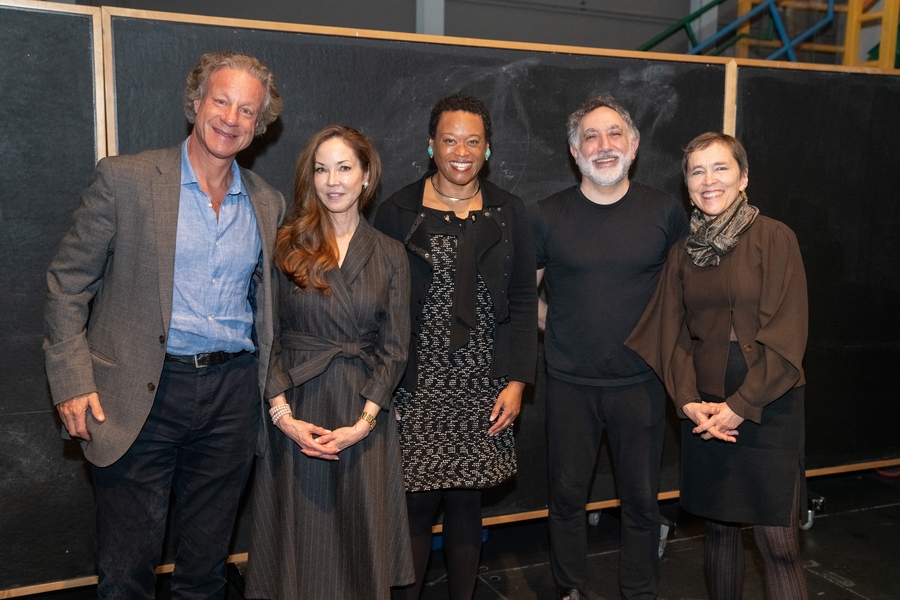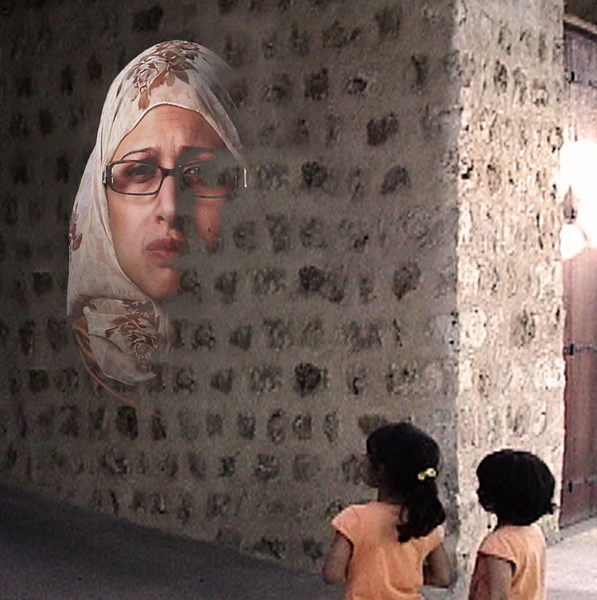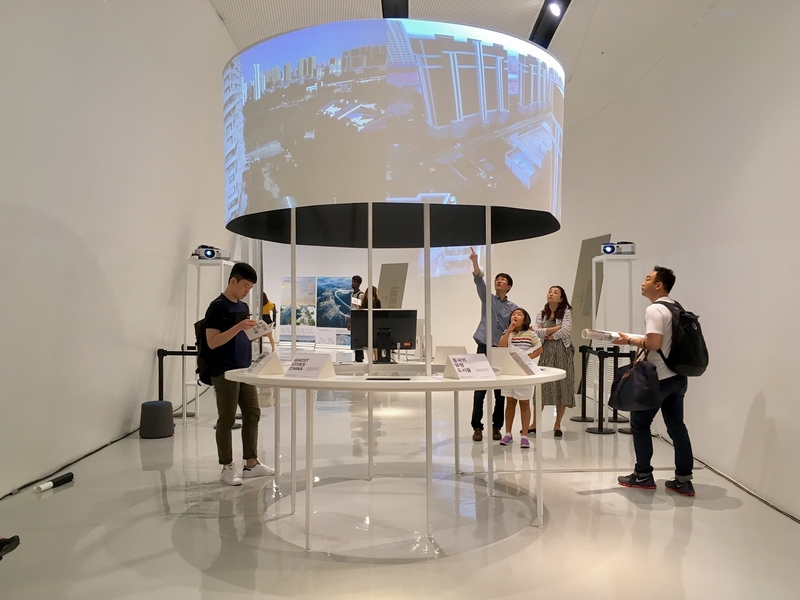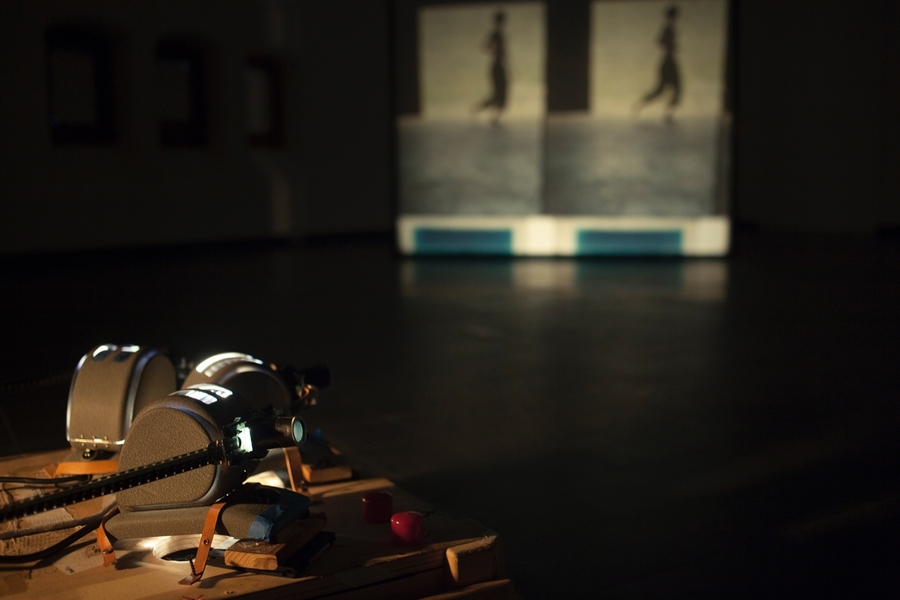Driven by the rise of transformative digital technologies and the proliferation of data, human storytelling is rapidly evolving in ways that challenge and expand our very understanding of narrative. Transmedia — where stories and data operate across multiple platforms and social transformations — and its wide range of theoretical, philosophical, and creative perspectives, needs shared critique around making and understanding.
MIT’s School of Architecture and Planning (SA+P), working closely with faculty in the MIT School of Humanities, Arts, and Social Sciences (SHASS) and others across the Institute, has launched the Transmedia Storytelling Initiative under the direction of Professor Caroline Jones, an art historian, critic, and curator in the History, Theory, Criticism section of SA+P’s Department of Architecture. The initiative will build on MIT’s bold tradition of art education, research, production, and innovation in media-based storytelling, from film through augmented reality. Supported by a foundational gift from David and Nina Fialkow, this initiative will create an influential hub for pedagogy and research in time-based media.
The goal of the program is to create new partnerships among faculty across schools, offer pioneering pedagogy to students at the graduate and undergraduate levels, convene conversations among makers and theorists of time-based media, and encourage shared debate and public knowledge about pressing social issues, aesthetic theories, and technologies of the moving image.
The program will bring together faculty from SA+P and SHASS, including the Comparative Media Studies/Writing program, and from MIT’s Computer Science and Artificial Intelligence Laboratory (CSAIL). The formation of the MIT Stephen A. Schwarzman College of Computing adds another powerful dimension to the collaborative potential.
“We are grateful to Nina and David for helping us build on the rich heritage of MIT in this domain and carry it forward,” says SA+P Dean Hashim Sarkis. “Their passion for both innovation and art is invaluable as we embark on this new venture.”
The Fialkows’ interest in the initiative stems from their longstanding engagement with filmmaking. David Fialkow, cofounder and managing director of venture capital firm General Catalyst, earned the 2018 Academy Award for producing the year's best documentary, “Icarus.” Nina Fialkow has worked as an independent film producer for PBS as well as on several award-winning documentaries. Nina has served as chair of the Massachusetts Cultural Council since 2016.
“We are thrilled and humbled to support MIT’s vision for storytelling,” say David and Nina Fialkow. “We hope to tap into our ecosystem of premier thinkers, creators, and funders to grow this initiative into a transformative program for MIT’s students, the broader community, and our society.”
The building blocks
The Transmedia Storytelling Initiative draws on MIT’s long commitment to provocative work produced at the intersection of art and technology.
In 1967, the Department of Architecture established the Film Section and founded the Center for Advanced Visual Studies (CAVS). Over time, CAVS brought scores of important video, computer, and “systems” artists to campus. In parallel, the Film Section trained generations of filmmakers as part of Architecture’s Visual Arts Program (VAP). SA+P uniquely brought making together with theorizing, as Urban Studies and Architecture departments fostered sections such as History, Theory, Criticism (HTC), and the Architecture Machine group that became the Media Lab in 1985.
A major proponent of “direct cinema,” the Film Section was based in the Department of Architecture until it relocated to the Media Lab. With the retirement of its charismatic leader, Professor Richard Leacock, its energies shifted to the Media Lab’s Interactive Cinema group (1987–2004) under the direction of the lab’s research scientist and Leacock’s former student, Glorianna Davenport.
The 1990s’ shift from analog film and video to “digitally convergent” forms (based on bits, bytes, and algorithms) transformed production and critical understanding of time-based media, distributing storytelling and making across the Institute (and across media platforms, going “viral” around the globe).
In parallel to Davenport’s Interactive Cinema group and preceding the Media Lab’s Future Storytelling group (2008–2017), the Comparative Media Studies program — now Comparative Media Studies/Writing (CMS/W) — emerged in SHASS in 1999 and quickly proved to be a leader in cross-media studies. The research of CMS/W scholars such as Henry Jenkins gave rise to the terms “transmedia storytelling” and “convergence” that have since become widely adopted.
The program’s commitment to MIT’s “mens-et-manus” (“mind-and-hand”) ethos takes the form of several field-shaping research labs, including: the Open Documentary Lab, which partners with Sundance and Oculus, explores storytelling and storyfinding with interactive, immersive, and machine learning systems; and the Game Lab, which draws on emergent technologies and partners with colleagues in the Department of Computer Science and Engineering to create rule-based ludic narratives. Current CMS/W faculty such as professors William Uricchio, Nick Montfort, D. Fox Harrell, and Lisa Parks each lead labs that draw fellows and postdocs to their explorations of expressive systems. All have been actively involved in the discussions leading to and shaping this new initiative.
Reflecting on the new initiative, Melissa Nobles, Kenan Sahin Dean of SHASS, says, “For more than two decades, the media, writing, and literature faculty in MIT SHASS have been at the forefront of examining the changing nature of media to empower storytelling, collaborating with other schools across the Institute. The Transmedia Initiative will enable our faculty in CMS/W and other disciplines in our school to work with the SA+P faculty and build new partnerships that apply the humanistic lens to emerging media, especially as it becomes increasingly digital and ever more influential in our society.”
The Transmedia Storytelling initiative will draw on these related conversations across MIT, in the urgent social project of revealing stories created within data by filters and algorithms, as well as producing new stories through the emerging media of the future.
“For the first time since the analog days of the Film Section, there will be a shared conversation around the moving image and its relationship to our lived realities,” says Caroline Jones. “Transmedia’s existing capacity to multiply storylines and allow users to participate in co-creation will be amplified by the collaborative force of MIT makers and theorists. MIT is the perfect place to launch this, and now is the time.”
Involving members of several schools will be important to the success of the new initiative. Increasingly, faculty across SA+P use moving images, cinematic tropes, and powerful narratives to model potential realities and tell stories with design in the world. Media theorists in SHASS use humanistic tools to decode the stories embedded in our algorithms and the feelings provoked by media, from immersion to surveillance.
SA+P’s Art, Culture and Technology program — the successor to VAP and CAVS — currently includes three faculty who are renowned for theorizing and producing innovative forms of what has long been theorized as “expanded cinema”: Judith Barry (filmic installations and media theory); Renée Green (“Free Agent Media,” “Cinematic Migrations”); and Nida Sinnokrot (“Horizontal Cinema”). In these artists’ works, the historical “new media” of cinema is reanimated, deconstructed, and reassembled to address wholly contemporary concerns.
Vision for the initiative
Understandings of narrative, the making of time-based media, and modes of alternative storytelling go well beyond “film.” CMS in particular ranges across popular culture entities such as music video, computer games, and graphic novels, as well as more academically focused practices from computational poetry to net art.
The Transmedia Storytelling Initiative will draw together the various strands of such compelling research and teaching about time-based media to meet the 21st century’s unprecedented demands, including consideration of ethical dimensions.
“Stories unwind to reveal humans’ moral thinking,” says Jones. “Implicit in the Transmedia Storytelling Initiative is the imperative to convene an ethical conversation about what narratives are propelling the platforms we share and how we can mindfully create new stories together.”
Aiming ultimately for a physical footprint offering gathering, production, and presentation spaces, the initiative will begin to coordinate pedagogy for a proposed undergraduate minor in Transmedia. This course of study will encompass storytelling via production and theory, spanning from computational platforms that convert data to affective videos to artistic documentary forms, to analysis and critique of contemporary media technologies.









